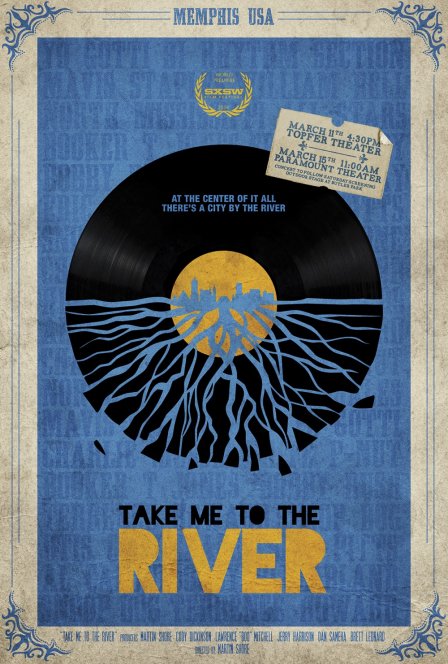I’m willing to be generous toward Martin Shore’s documentary Take Me to the River, perhaps egregiously so. I’m willing to overlook its problems with pace and structure as well as its featherweight touch with historical context; I’ll forgive its tendency to pander and underestimate its perceived audience; I’ll even accept the cringe-worthy presence of a cartoonishly arrayed Terrence Howard as host and musical dilettante. I will do this simply because for all of the things Take Me to the River does wrong, it does one thing very right: it gets into the studio with master musicians and lets them do their thing, capturing the spark of creation and the visceral thrill of live performance.
The basic premise of Shore’s film (which also counts Jerry Harrison of the Talking Heads as a co-writer and producer) is straightforward: celebrate the rich history of Memphis’s music scene by teaming old pros like Charlie Musselwhite, Bobby “Blue” Bland, and Booker T. Jones with younger musicians and rappers like Yo Gotti, Snoop Dogg, and Oscar winner Frayser Boy. Footage of the ensuing recording sessions makes up the lion’s share of the film, but interspersed throughout is historical and biographical information about Stax, Royal, Muscle Shoals, and other legendary Memphis studios responsible for the exemplary soul and R&B recordings of the 60s and 70s.
Underscoring the intergenerational aspirations of the film, Lawrence “Boo” Mitchell (son of Willie Mitchell, owner of Royal Studios) and Cody Dickinson (son of famed producer Jim Dickinson and member, along with his brother Luther, of the North Mississippi All-Stars) are co-producers of both the sessions and the film. With one foot in each generation, they serve as a bridge between the two vanguards, in many cases already having working relationships with both. In what is perhaps the film’s best sequence, Cody and Luther Dickinson hang out, reminisce, and record with Mavis Staples, a long-time family friend from Jim Dickinson’s association with Stax records and the Staple Singers. In a film that often makes too fine a point of the mortality of its participants and the absence of many more legendary musicians and producers who have passed on, Staples’s oversized spirit brings a welcome and infectious warmth, joy, and levity.
Still, Take Me to the River is at its best when it focuses on the music. Director Martin Shore is not a filmmaker by trade, and it shows in the film’s awkward shoe-horning of historical information, much of which is curiously backloaded and takes away a lot of the film’s momentum toward the last half hour. What he is, however, is a Grammy-nominated music producer who understands the power of music, and especially that of a group of musicians playing live together. As such, he fills the film with long takes of the sessions — not just the recording, but circumjacent moments, like scenes of Luther Dickinson struggling to figure out a tricky chord change and riff from a Staple Singers record or Charles “Skip” Pitts extolling the virtues of Finger-Ease guitar string lubricant.
Take Me to the River is by no means a great documentary, but it does document great moments, which is perhaps the cinema’s most significant gift. So if I have to sit through Lil’ P-Nut rapping to see Otis Clay sing “Trying to Live My Life Without You” or put up with Terrence Howard’s affected crooning to witness some of the last footage of the late, great Hubert Sumlin trading licks, then so be it. Music has the power to bridge generations and cultures; Take Me to the River gets it, and makes it clear by showing rather than telling.

